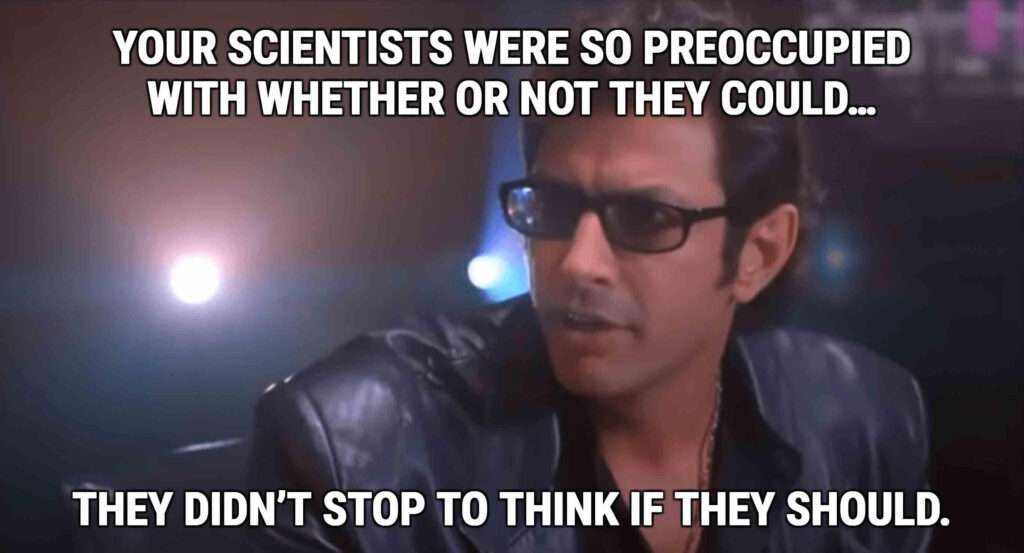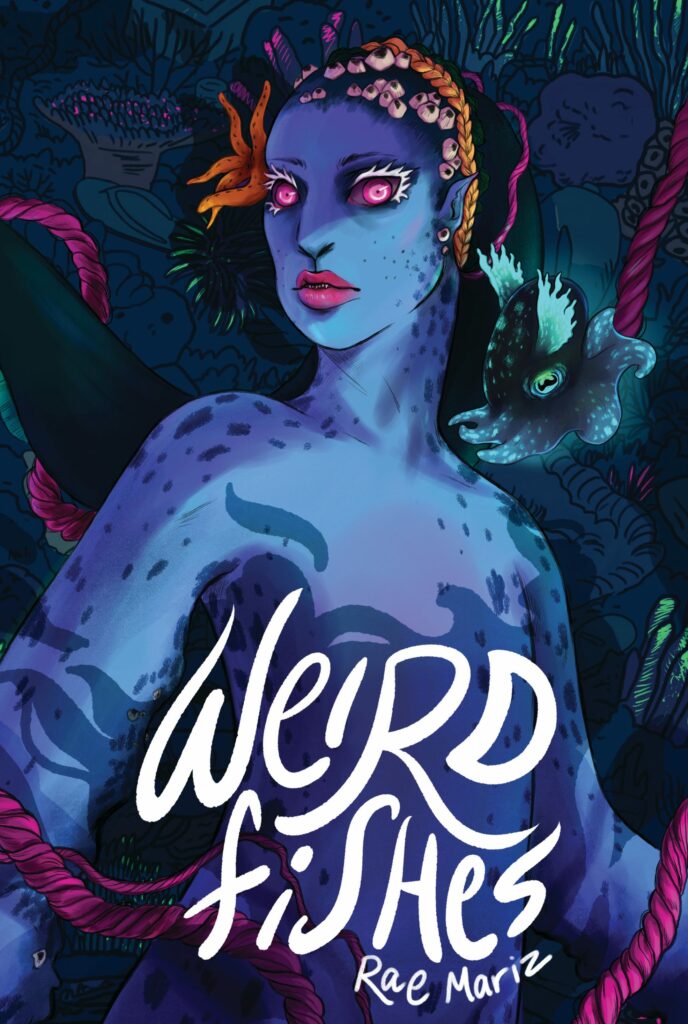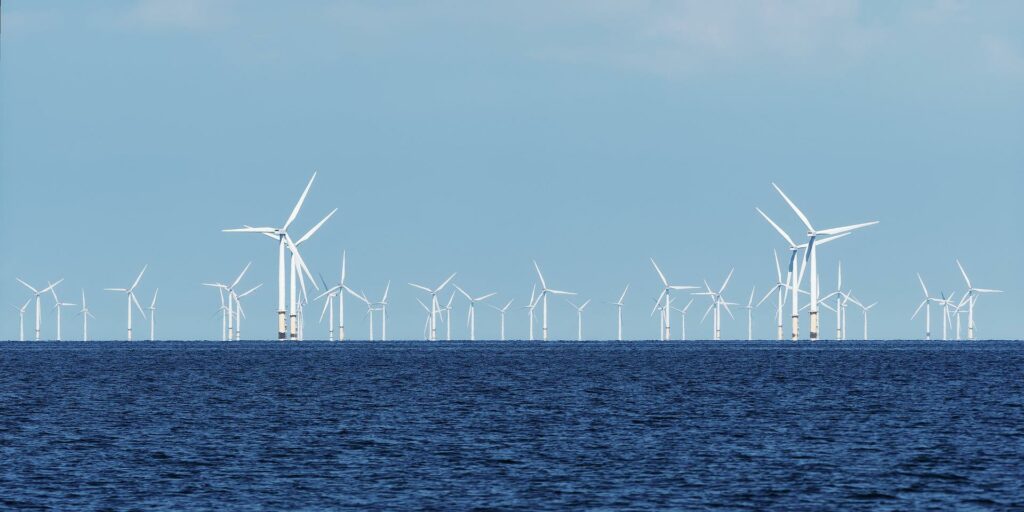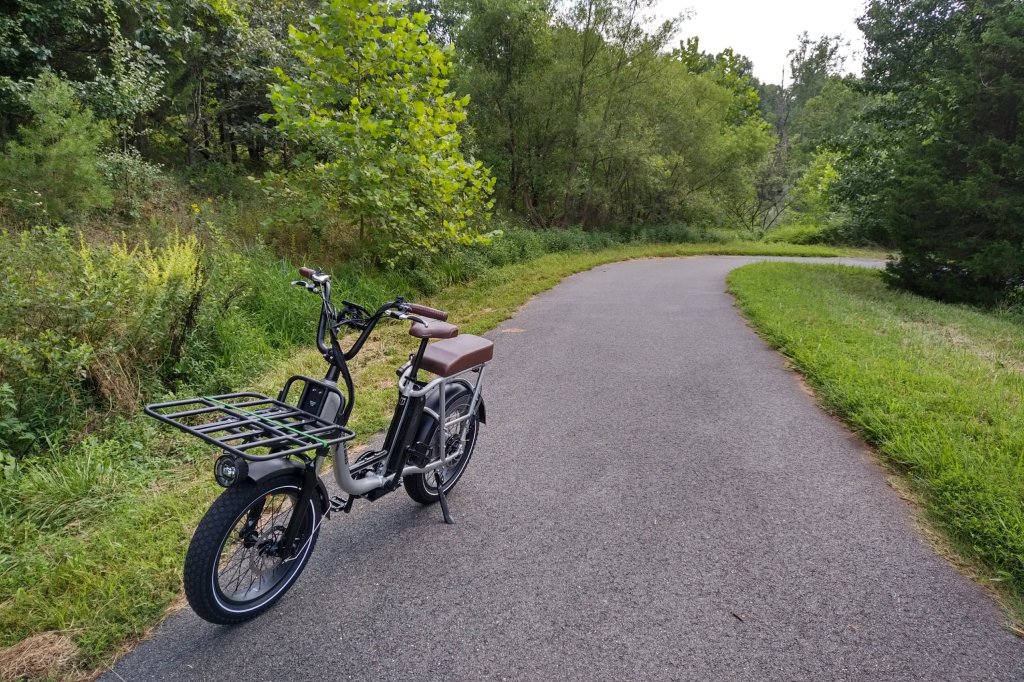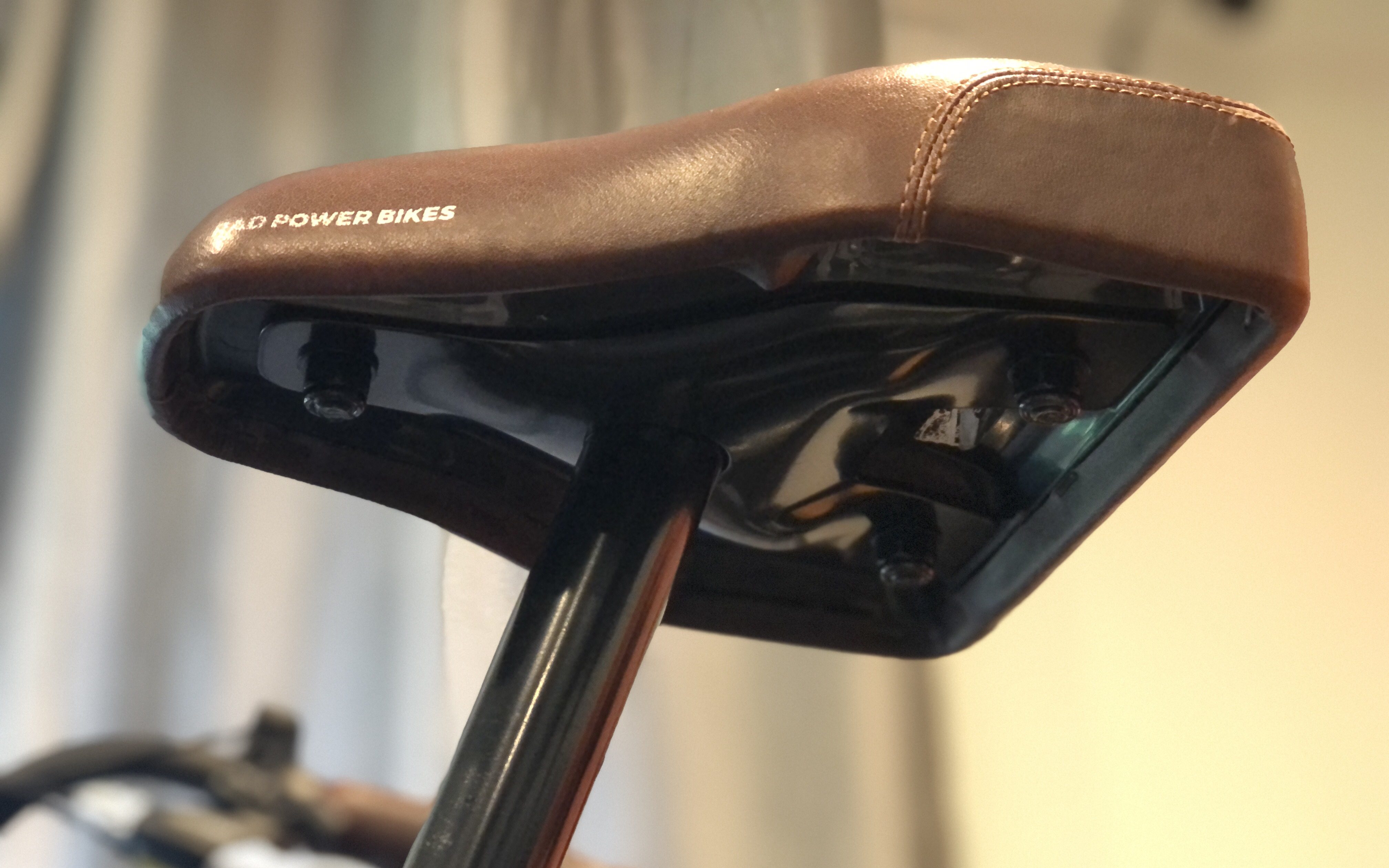by BrightFlame
How many genres does it take to change a light bulb . . . from incandescent to LED? That is, from authoritarian, individualistic, power-over, capitalist tropes to regenerative, interconnected, just, collaborative ones. (Pardon the cliché.)
My thoughts about solarpunk and lunarpunk continue to evolve, just like the amorphous container of each vibe/genre/aesthetic/movement (abbreviated as vibe in this essay). Here are my musings of the moment (February 2023).
The permeable amorphous shape of solarpunk
In my January 2022 article Towards Solarpunk Futures, I wrote:
Jay Springett, a consultant strategist and writer, gave a very interesting presentation about solarpunk. Key takeaways for me: solarpunk is a growing container where gravity pulls some core, mutually understood concepts towards the center, and ideas around the edges are more blurred and in flux—this, by design. It’s an aesthetic of many voices; as such, solarpunks can speak only for themselves, not the movement as a whole.
Jay says in the presentation, “solarpunk asks: What if we together, collectively, create a container that can be used by anyone to place their ideas about the future inside. And what sort of stories would that container with the things it contains, create?”
I love the image Jay creates of the solarpunk container, which he deems a memetic engine that re-futures participants’ imaginations—an engine for producing ideas about the future. In other words, the container holding various inputs becomes an idea-generator, which inspires more inputs to the container and continually reshapes it. Here is my doodle of such a container.
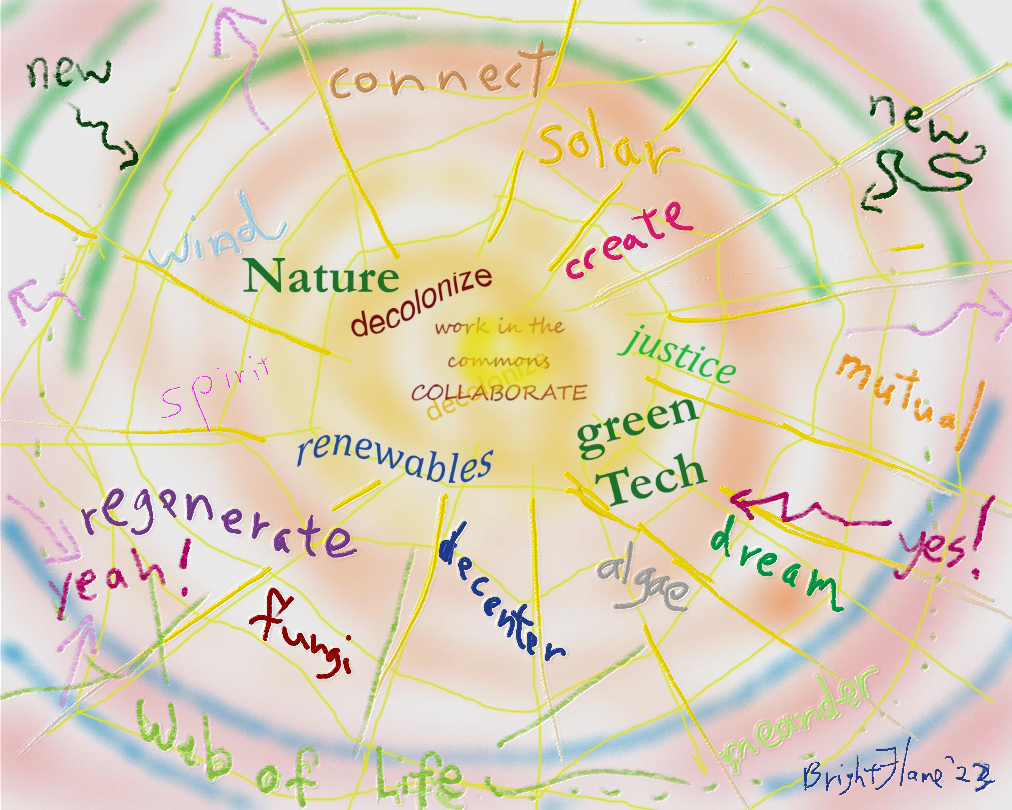
Though the container is more a shapeshifting amoeba than round, and its edges are permeable so ideas flow in and out. Note that the ideas in my graphic are examples to show the form, not an attempt to capture the state of solarpunk or the ideas drifting around the container at the moment.
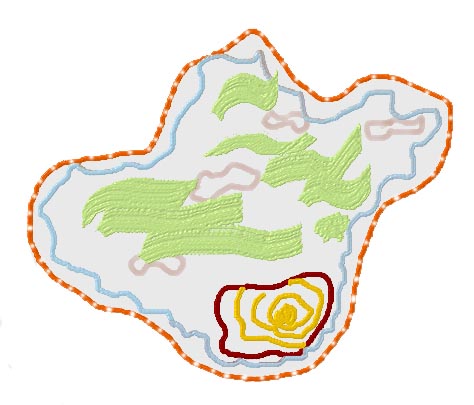
In his essay “Solarpunk: A Container for More Fertile Futures,” Jay says “solarpunk is defined by the ideas it produces, not by the container itself.” Yet to me, it’s both the mechanics of the container—a shapeshifting, dynamic engine—plus the generated ideas, which become fuel for more ideas.
How does lunarpunk fit?
In early 2022, I wrote that lunarpunk is the way in which we understand the Earth as sacred—how this turns into a lifestyle and a spiritual form. And that lunarpunk expresses its magical and spiritual side more readily than solarpunk.
I also created this graphic early last year:
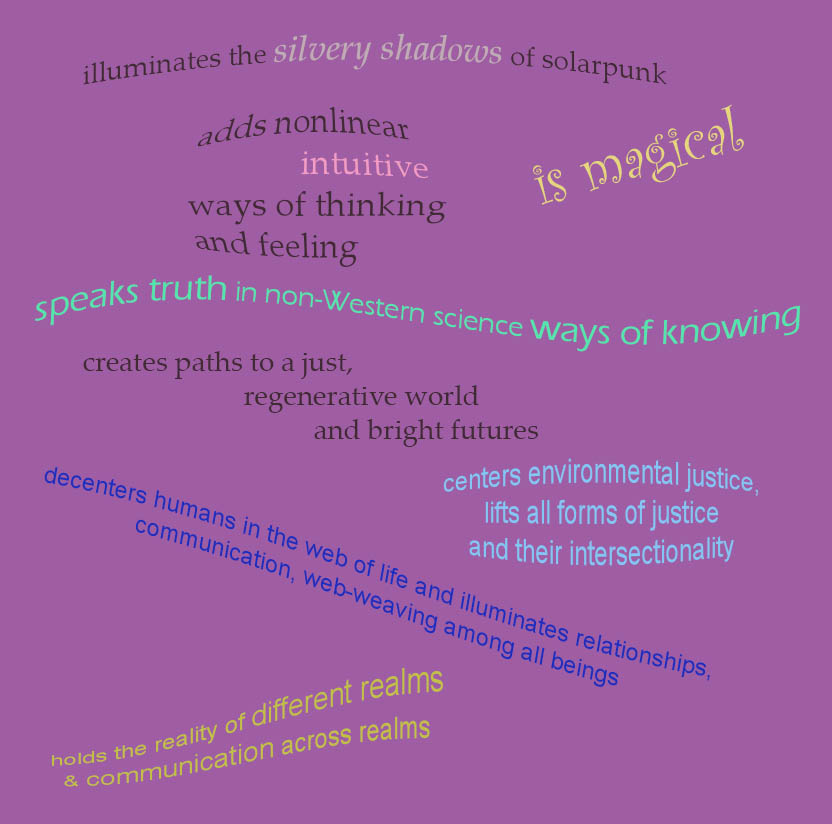
As I write this essay nearly a year later, the above no longer adequately captures lunarpunk.
How they combine in me
I jumped into solarpunk several years back because the vibe describes my path and my life’s work. I write, teach, create, and act for justice and a regenerative world. Thus, solarpunk.
Yet, I also make magic for justice and a regenerative world. As a Witch, I sense and shape energy. I talk with nonhumans like trees and mycorrhizae. I explore the Web of Life. Much of my teaching and writing helps humans feel their connection with the Earth and develop de-centered relationships with Earth kin. I lift different ways of knowing. So, lunarpunk.
Perhaps solarpunk is my activist side and lunarpunk is my magical side and my connection with the Web of Life.
But I don’t like binaries.
The alchemy of solarpunk and lunarpunk
Solarpunk and lunarpunk, to me, are not a binary and not opposites. Besides, binary thinking is a characteristic of authoritarianism, white supremacy, and religious dogma: it doesn’t fit with a solarpunk or lunarpunk vibe. We stay clear of binaries in my spiritual tradition (the Reclaiming Tradition of Witchcraft), recognizing that there are at least three options or paths in any situation.
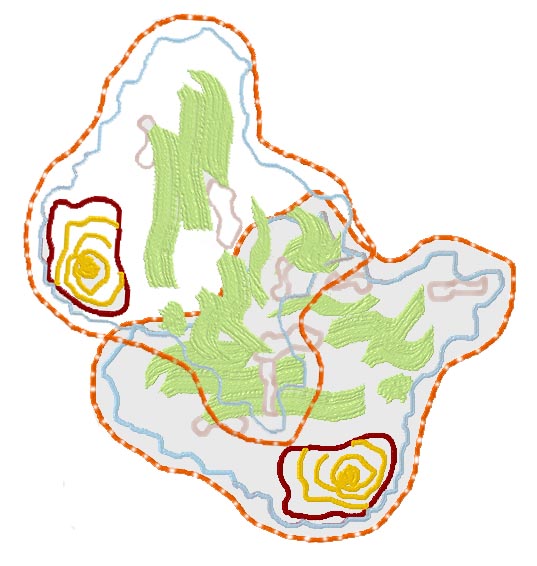
In any event, I would argue solarpunk and lunarpunk are not separable. Yet I hesitate writing inseparable, which brings to mind an image of two atoms linked in a static way to form a molecule (like CO, carbon monoxide). Since lunarpunk and solarpunk are amorphous, their connection is varied and changeable, not fixed like a molecular bond.
Furthermore, solarpunk and lunarpunk don’t just touch one another, they overlap. But to what extent? Does it depend on the context, the particular example?
Or is lunarpunk totally within solarpunk like a starfish in a tidal pool? Perhaps like mitochondria within a cell, lunarpunk energizes solarpunk. Or is it the reverse, and solarpunk is subsumed in lunarpunk like humans are part of Nature.
Does the vibe change more to lunarpunk or more to solarpunk depending on what is highlighted in the amorphous shape?


Perhaps lunarpunk and solarpunk totally overlap, neither a subset of the other.
Then what about as an art aesthetic, you might ask. Some say that solarpunk displays vivid and bright colors like in daylight, and lunarpunk displays shadow and bioluminescence like nighttime and underwater. To me, these highlight different areas of the form like my spotlit amoeba doodles, above. The aesthetics are connected—we can’t have shadow without light or brightness without dimness.
As a genre, lunarpunk might be an apt term for stories that tend towards fantasy. Yet is any literary work lunarpunk without being solarpunk? What of a story with no technology, yet all about creating just and regenerative culture? To me, that is still solarpunk highlighting a particular part of the amoebic container.
When I include communication between humans and non-human Earth kin, I’m not writing the fantastical, I’m writing of different ways of knowing. When I write of sensing and shaping energy—universal life force that flows through all creatures of Earth—it’s not fantasy. (See my stories “Myco Macro” and “Maybe We Are All Witches” as examples.) My manuscript about a coven thwarting those who harm the Web of Life contains the kind of magic and workings we Reclaiming Witches practice, including working in the astral realm. All of these works might be called lunarpunk. And they are also solarpunk.
What to call the combined vibes
I feel that solarpunk and lunarpunk are not two different vibes—they are one. For example, non-Western/non-dominant ways of knowing are as integral to solarpunk as lunarpunk. Solarpunk is enlivened by the sacred, by spirituality, not separate from it. Lunarpunk is as much about creating a just, regenerative, bright future as solarpunk. As much about cooperative, mutual, fossil-free societies as solarpunk. Interdependence and communication among the Web of Life are central to both.
I admit: I cringe when folx call solarpunk and lunarpunk opposites. I think this is because I want a vibrant, dynamic container. One that is the most pluralistic and feeds the “uncommons,” as Navarre described in his introduction to this blog series.
Just as mycorrhizae and trees combine as a regenerative forest, lunarpunk and solarpunk form a whole. Take either away and you destroy the forest.
If we erect borders in the forest to define lunarpunk versus solarpunk, the forest is less interconnected and dynamic, less able to thrive. Yet, at any given moment we interact with a different part of the forest, thus changing how we express the vibe.
If we separate lunarpunk from the amorphous, pluralistic solarpunk memetic engine, the container becomes less rich, the engine has less fuel.
What would I call lunarpunk and solarpunk combined? Perhaps just solarpunk.
How many genres does it take to change that lightbulb?
One amorphous, evolving genre or vibe.

BrightFlame (she/they) writes, teaches, and makes magic in service to a just, regenerating world. Her short- and long-form speculative fiction tend towards solarpunk/lunarpunk, including in Solarpunk Magazine Issue 6, in Bioluminescent (Android Press, January 2023), and in a forthcoming solarpunk anthology. She’s known for her teaching in the worldwide pagan community and is affiliated with a sustainability education center at Columbia University that features her workshops and nonfiction. She lives on Lenape territory (Turtle Island) with a human, a forest, a labyrinth, hawks, bees, ponds, turtles, monarda, fox, fungi, rocks, and many other nonhumans. Find her writing and doodles at http://brightflame.com, @BrtFlame on Twitter (if it’s still there), and @BrightFlame@wandering.shop.

